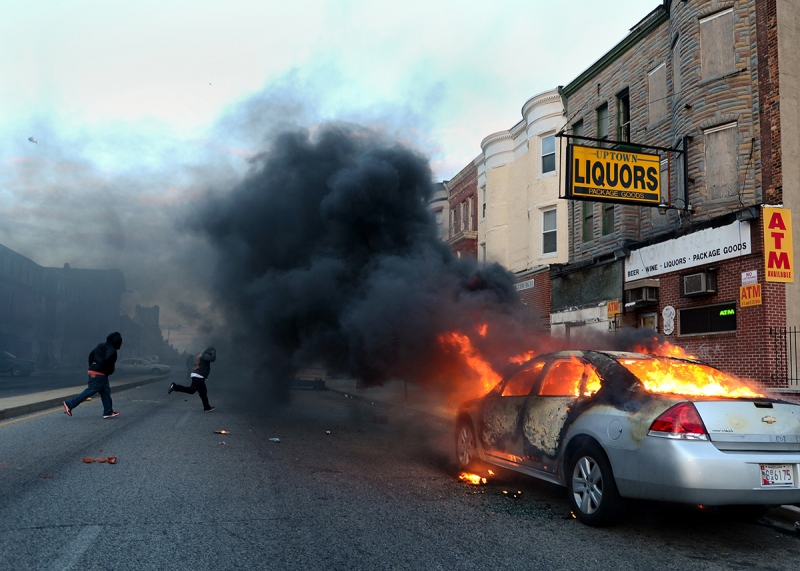Kenneth C. Holston tells Baltimore rioters’ story
In April 2015, when U.S. Air Force photojournalist Kenneth C. Holston heard news of the riots in Baltimore, he headed straight for the action.
• September 2016 issue
In April 2015, when U.S. Air Force photojournalist Kenneth C. Holston heard news of the riots in Baltimore, he headed straight for the action.
“I'd just returned from photographing jets taking off,” says Holston, who was stationed at South Carolina's Shaw Air Force Base at the time. “I saw on CNN things starting to happen in Baltimore and I wanted to cover it. So I got a ticket.” After he flew in, he rented a car and used Google Maps to navigate to the CVS that rioters had just set aflame, then did his best to imbed and assess. “At that point they were starting to break into liquor stores and other shops that were on the street," he says, "and I just slowly started making images.”
Holston’s goal was to tell the story from the perspective of the protesters, “to get to the core reason they chose to do those things to express their feeling and concerns,” he says. He was struck by how young the protestors were, and how passionate. And after intervewing a few of them, he was also surprised and delighted, he says, by their knowledge of the situation. "From an outsider’s perspective, it looked like they were tearing down their own city and everybody was just jumping on the bandwagon. But I found that in actuality they were passionate about what they believed in, and they knew the facts of the Freddie Gray case and this is what led to such actions.”

Imbedding to take photographs and videos of the volatile scene wasn’t easy. Police were shooting rubber bullets at protestors, and protesters were fighting back by throwing bottles and rocks and setting cars on fire. Some protesters were put off by Holston’s presence. “They said I was trying to exploit them rather than tell their story. And there were points where it got—it was starting to get violent,” he says. It took some fast talking to diffuse their anger, but once they understood that he wanted their voices to be heard, they accepted his presence and some were willing to be interviewed.
Holston made photographs late into the night and early morning—for about 9 to 10 hours—then returned to work at the base. He captioned the photos and uploaded them to his CNN iReport account, where they were picked up by CNN and other news outlets. His multimedia Facebook post garnered 150,000 views.
“I feel like there are stories that need to be told so that people who view this from the outside can make a decision how they feel about this and why,” Holston says. “I wanted to bring the rawest imagery I could.”
This spring, Holston was named Military Photographer of the Year by the U.S. Department of Defense for his portfolio of images, which included a picture story of images made during the Baltimore riots.
Amanda Arnold is associate editor of Professional Photographer magazine.
Tags: documentary photography


 View Gallery
View Gallery


